Whether you’re jet-setting across time zones or enduring the hum of engines in a busy terminal, cabin noise often ranges between 60 aAltitude nd 100 decibels—levels that, if sustained, can lead to noise-induced hearing loss and inner-ear fatigue.
By wearing quality earplugs with a high Noise Reduction Rating (NRR), travelers can lower harmful sound exposure below the 70 dB threshold recommended by audiologists, safeguarding long-term hearing health.
Beyond protection, the right earplugs—like those featuring pressure-regulating filters—help ease ear-popping discomfort during takeoff and landing, maintaining comfort at cruising altitude.
With travel-friendly designs such as compact silicone tips and reusable cases, you’ll arrive refreshed, rested, and ready to explore new destinations in peak comfort.
Our Top Picks










Selection Criteria: How We Chose the Champions
Here’s how we evaluated each contender to ensure you get the quietest, most comfortable, and travel-ready earplugs on the market. We prioritized measurable noise reduction, user-tested comfort and fit, material performance, and travel-friendly features like compact cases and long-term durability.
Our criteria reflect both laboratory ratings and real-world travel scenarios, so you can trust these champions to deliver peace and quiet at 35,000 feet or in a bustling hostel dorm.
Noise Reduction Rating (NRR) Explained
We focused on earplugs with a high Noise Reduction Rating (NRR), which indicates the maximum decibels (dB) blocked under ideal conditions. Typical travel earplugs range from 22 dB to 33 dB NRR, with top performers hitting the upper end to reduce engine hum and chatter below the 70 dB threshold that experts deem safe for prolonged exposure.
Although packaging NRR can overstate real-world attenuation, we selected models whose independent lab tests and user fit-tests consistently deliver within 80 percent of their rated NRR. Where available, we referenced NIOSH-adjusted NRR values to account for derating recommendations, ensuring more reliable protection estimates (cdc.gov).
Comfort, Fit, and Ergonomics
Ergonomic design is critical for long flights or overnight bus rides, so we chose plugs with soft, flexible materials that conform to the ear canal without pressure points. Wide-flange and triple-flange designs scored high in user trials for secure fit and ease of insertion, reducing the risk of dislodgement during sleep. We also prioritized hypoallergenic options—silicone and thermoplastic models free of latex or PVC—to minimize irritation on multi-day trips.
Finally, adjustable stem or loop features earned bonus points for allowing fine-tuning of depth and seal, adapting to diverse ear shapes.
2.3 Material Types: Foam, Silicone, Thermoplastic
Different materials balance noise reduction, comfort, and reusability in unique ways:
| Material | Typical NRR (dB) | Durability | Reusability |
|---|---|---|---|
| Foam | 29 – 33 | Single-use | Replace after 1–3 nights (hygiene) |
| Silicone | 20 – 25 | Multi-use (weeks) | Up to 20 uses; wash and air dry |
| Thermoplastic | 25 – 29 | Multi-use (months) | Durable shell; replace tips seasonally |
Silicone plugs offer a soft seal and easy cleaning, while thermoplastic earplugs maintain shape over hundreds of uses, making them a sustainable pick for frequent flyers.
Portability, Durability, and Reusability
For travel, compactness and case quality matter as much as attenuation. We rated each product’s carry case on size (fits in a pocket or keychain) and protection (dust-proof, crush-resistant).
Reusable plugs scored points for washable materials and longevity—some thermoplastic models last up to 200 uses, translating to months of noise relief without replacements (health.com). Conversely, disposable foam still earns favor for ultra-lightweight packing but demands you stock extras for long trips.
We prioritized options with clear cleaning instructions and included travel-size cases to ensure hygiene and durability on the go.
Buying Guide: Choosing Your Ideal Travel Earplugs
Here’s a concise buying guide to help you pick the perfect earplugs for any travel scenario, balancing noise reduction, comfort, hygiene, and budget.
Matching Earplugs to Travel Scenarios (Flights, Trains, Buses)
Different travel modes expose you to varying noise profiles—aircraft cabins average 85–100 dB, trains around 75–90 dB, and buses 65–80 dB. Choose higher NRR (≥30 dB) foam plugs for long-haul flights to curb engine roar, and silicone or thermoplastic plugs (20–27 dB NRR) for trains and buses where moderate noise and comfort matter more.
For overnight train or bus sleepers, look for ergonomic triple-flange or loop designs that stay put during side-sleeping. If you need pressure relief on ascents and descents, opt for aviation-specific plugs with filtering membranes like Earmonix or Alpine Silence.
| Scenario | Noise Level (dB) | Recommended NRR | Ideal Material |
|---|---|---|---|
| Flights | 85–100 | 30–33 dB | Foam (single-use) |
| Trains | 75–90 | 25–27 dB | Thermoplastic (reusable) |
| Buses | 65–80 | 20–25 dB | Silicone (multi-use) |
Assessing Foam vs. Silicone vs. Thermoplastic
Foam earplugs offer the highest NRR (29–33 dB) but are single-use and must be replaced every 1–3 nights for hygiene. Silicone plugs (20–25 dB NRR) balance comfort and reusability (up to 20 washes), making them ideal for moderately noisy train or bus travel.
Thermoplastic options (25–29 dB NRR) combine a durable shell with replaceable tips, lasting months and providing a consistent seal across varied ear shapes.
| Material | NRR Range | Reusability | Comfort & Fit |
|---|---|---|---|
| Foam | 29–33 dB | 1–3 nights | High initial comfort; may compress over time |
| Silicone | 20–25 dB | ~20 uses | Soft seal; hypoallergenic |
| Thermoplastic | 25–29 dB | Months (tips replaceable) | Soft seal, hypoallergenic |
Hygiene, Cleaning, and Storage Tips
Always wipe foam plugs with a clean cloth and inspect for shape recovery before reuse, or discard when deformed. Rinse silicone plugs under warm water with mild soap, air-dry completely, and avoid abrasive cleaners to maintain material integrity.
For thermoplastic models, detach and wash tips per the manufacturer’s instructions, then fully dry before reassembly. Store all plugs in a protective, dust-proof case—many brands offer attachable keychain cases to prevent loss and contamination.
Price vs. Performance: Finding the Best Value
Budget foam plugs can cost as little as $0.20 per pair, delivering top-tier NRR but lacking reusability. Mid-range silicone options average $10–$15 with 20–25 dB NRR and weeks of use, offering a strong cost-to-comfort ratio.
Premium thermoplastic and filtered plugs like Loop Quiet 2 or Alpine Silence run $25–$50 but justify their price with consistent attenuation, custom fit, and longevity, translating to cents per use over many months.
Assess how often you travel: frequent flyers may recoup higher upfront costs through extended plug life and superior comfort, while occasional travelers may favor budget foam or mid-range silicone for one-off trips.
This guide arms you with clear, scenario-driven advice, material trade-offs, hygiene best practices, and a framework for balancing cost and performance—so you can choose earplugs that keep your journeys peaceful and your ears healthy.
FAQs: Answering Common Reader Questions
Travel earplugs should block at least 25–33 dB to lower common cabin noise (85–100 dB) into a safe range below 70 dB, protecting against hearing damage and fatigue. Specialized aviation plugs with pressure-regulating filters can significantly reduce ear-popping discomfort during ascent and descent.
Reusable earplugs made of silicone or thermoplastic are safe and hygienic when cleaned regularly, whereas foam plugs offer higher NRR but require frequent replacement for hygiene. To maximize longevity and performance, always follow manufacturer cleaning guidelines—wipe or rinse plugs with mild soap, dry completely, and store in a protective, dust-proof case.
How Many Decibels Should Travel Earplugs Block?
Most travel earplugs feature a Noise Reduction Rating (NRR) between 22 dB and 33 dB, with top models rated 30 dB or higher to cut typical aircraft noise (85–100 dB) down to safer levels below 70 dB. Audiologists recommend selecting plugs whose real-world attenuation (NIOSH-adjusted) is at least 80 percent of the labeled NRR for effective protection.
| NRR Rating (dB) | Post-Derating Reduction (dB) | Effective Exposure if Ambient = 90 dB |
|---|---|---|
| 33 | (33 − 7) ÷ 2 = 13 | ≈ 77 dB |
| 29 | (29 − 7) ÷ 2 = 11 | ≈ 79 dB |
| 25 | (25 − 7) ÷ 2 = 9 | ≈ 81 dB |
Can Earplugs Prevent Ear Pressure Pain on Flights?
Yes—aviation-specific earplugs use tiny pressure-regulating filters to slow the rate of pressure change in your ear canal, reducing barotrauma and pain during takeoff and landing. Ceramic‐filter plugs (e.g., EarPlanes) have been clinically shown to ease “airplane ear” by exerting less stress on the eardrum as cabin pressure shifts.
Beyond specialized plugs, simple techniques like chewing gum, yawning, or using a warm compress can further help equalize ear pressure.
Are Reusable Earplugs Safe and Hygienic?
Reusable earplugs made from silicone or thermoplastic elastomer (TPE) are generally safe when cleaned properly, though regular use may push earwax deeper into the canal if hygiene lapses occur.
Compared to single-use foam, reusable plugs are eco-friendly and cost-effective, lasting weeks (silicone) to months (thermoplastic) with correct care. To avoid infection or earwax buildup, inspect plugs before each use and replace them if you notice any damage or persistent discoloration.
How Do I Clean and Store Earplugs Properly?
For silicone and thermoplastic plugs, remove tips and wipe all surfaces with a damp cloth or rinse under warm water with mild soap, then air-dry completely before reassembling. Never submerge electronic components or filters; instead, spot-clean around them.
Foam plugs should be wiped with a clean, dry cloth and discarded after 1–3 uses or when they no longer expand fully. Store all plugs in a small, dust-proof case—keychain or pocket-sized—to protect them from dirt and damage while traveling.
Product Overview
Decibullz Custom Molded Earplugs allow users to create a personalized fit that ensures comfort and maximum noise isolation. Designed for various activities, these earplugs are particularly suited for shooting, traveling, and attending concerts where optimal hearing protection is essential.
Key Features
Benefits & Limitations
Product Overview
The EarPeace Everyday Ear Plugs are engineered for those seeking a comfortable yet effective noise management solution. With a unique design that allows for high-fidelity sound reduction, these earplugs are perfect for everyday situations like commuting, working in open offices, or attending loud events. They maintain auditory awareness while significantly reducing harmful noise levels.
Key Features
Benefits & Limitations
Product Overview
Eargasm Squishies are moldable silicone earplugs designed for versatility and comfort across multiple uses. With their unique squishy material, they conform to the shape of your ear, providing a personalized fit that can be adjusted for optimal noise reduction.
Key Features
Benefits & Limitations
Product Overview
MOLDEX Soft Foam Earplugs are designed to deliver maximum comfort and significant noise reduction, making them ideal for sleeping, traveling, and various noisy environments. With a Noise Reduction Rating (NRR) of 33 dB, they excel at blocking out disruptive sounds like snoring and loud environments, ensuring you get the peace you need.
Key Features
Benefits & Limitations
Mack’s Pillow Soft Silicone Earplugs
Product Overview
Mack’s Pillow Soft Silicone Earplugs are designed for comfort and versatility, making them ideal for sleeping, studying, and swimming. Their moldable silicone material conforms to the unique shape of your ear, providing a secure seal that blocks out noise effectively while remaining comfortable.
Key Features
Benefits & Limitations
Product Overview
Etymotic’s High-Fidelity Earplugs (ER20XS) are crafted for music lovers and concert-goers seeking effective hearing protection without compromising sound quality. These earplugs are designed to reduce sound levels evenly across frequencies while maintaining clarity for voices and music, making them a popular choice among musicians and concert attendees.
Key Features
Benefits & Limitations
Product Overview
HEAROS Ultimate Softness Series Ear Plugs are crafted from a proprietary foam formulation, designed to deliver superior comfort and high noise reduction. With a Noise Reduction Rating (NRR) of 32 dB, these earplugs are perfect for blocking out snoring, studying, or any loud environments.
Key Features
Benefits & Limitations
Final Thoughts
For the ultimate in custom fit and versatility, Decibullz Custom Molded Earplugs are an outstanding choice. They provide a secure fit suitable for various loud environments, making them perfect for concert-goers or shooting enthusiasts.
If you’re looking for everyday noise control without sacrificing sound quality, I highly recommend EarPeace Everyday Ear Plugs. They strike a great balance between comfort and effectiveness, ideal for daily use during travel.
How to Choose the Right Custom Molded Earplugs for Travel
Finding the perfect custom molded earplugs can feel overwhelming with the variety of options available. Here’s a guide to help you select the right pair for your needs:
1. Consider Your Primary Use
2. Material Matters
3. Noise Reduction Rating (NRR)
4. Comfort Features
5. Portability
By focusing on these factors, you can select earplugs that not only meet your travel needs but also enhance your overall experience, allowing you to travel smarter and more peacefully.
FAQs
Yes, many custom molded earplugs are designed specifically for comfort, making them great for sleeping. Look for options like Mack’s Pillow Soft Silicone Earplugs for ultimate comfort.
Cleaning methods vary, but generally, you can wash them with mild soap and warm water. Ensure they’re completely dry before storing them.
While some earplugs can be used for swimming, ensure they are specifically designed for water use. Many custom molded earplugs are not waterproof.
With proper care, custom molded earplugs can last several years. However, frequent use may necessitate replacement after about 1-2 years.
Not completely. While they significantly reduce noise, many models allow for some sound to come through, which is useful for safety and awareness.
Conclusion
As a travel expert who’s logged thousands of miles in the skies, I recommend Loop Quiet 2 earplugs for their sleek design and reliable 27 dB noise attenuation—perfect for silencing engine hum without sacrificing comfort.
For easing ear-popping during ascent and descent, choose aviation-specific plugs like AXIL’s X20, which use tiny filter membranes to balance pressure regulation with robust noise blocking. Budget-minded travelers can turn to Howard Leight foam earplugs, offering up to 33 dB NRR to protect against both cabin roar and busy terminal chatter.
Remember, OSHA limits safe exposure to 85 dB over eight hours, so packing quality earplugs is your smartest move for hearing health and a truly peaceful journey.

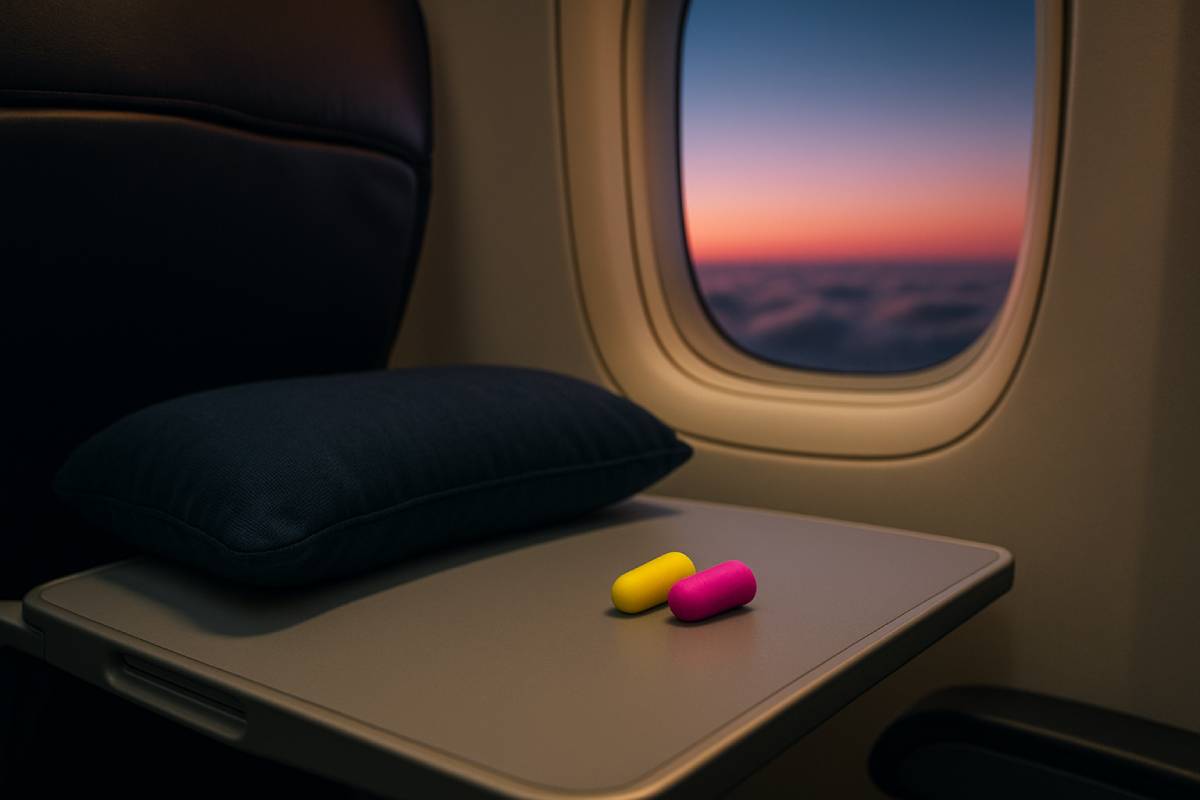
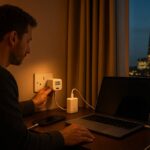

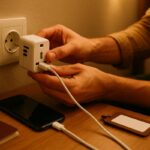












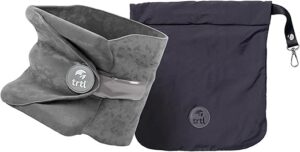
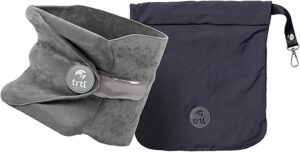
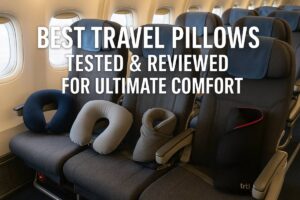
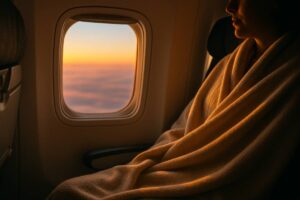
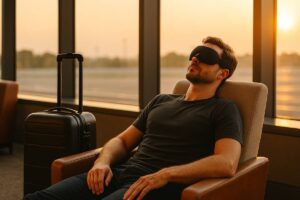
Yes! The Decibullz are highly rated for shooting as well. Their design really excels in loud environments.
I haven’t used them for shooting, but I’ve found them great for loud concerts and clubs! I can only imagine they would work just as well at a range.
I’ve been using Decibullz for my concerts, and honestly, they changed my experience completely! The custom fit is fantastic and they block out all the loud noise without losing the music quality. Has anyone tried using them for shooting? I’m curious how they perform in that environment too! 🎶🤘
I had a similar experience! I think they are great for occasional use, but I prefer something firmer for sleep.
Comfort can be subjective! Some users swear by Mack’s, while others prefer foam. It’s all about finding what works for you.
I just couldn’t get into the Mack’s Pillow Earplugs. They felt too bulky for me, and I didn’t find them comfortable at all. I’d rather stick with my old foam ones. Anyone else feel the same?
They are definitely a solid choice! The ratings can vary based on personal experiences, but many users love Moldex!
Totally agree! I think they’re underrated. I’ve used them for swimming too, and they work like a charm!
Moldex earplugs have been my go-to for years. They are super comfy and provide great noise cancellation! I love using them when I’m studying or trying to get a good night’s sleep. I’m surprised they weren’t rated higher in the article!
Glad to hear you loved them! For similar products, you might want to check out the EarPeace earplugs. They also focus on sound clarity.
I’ve heard good things about the Eargasm ones too! They’re designed for music lovers and might suit your needs.
I bought the Etymotic earplugs for a music festival, and they worked wonders! I could still hear the music clearly without the harshness. Can anyone recommend similar products that preserve sound quality?
That’s a common concern! Some users suggest using a little bit of earwax or keeping your head elevated might help.
I had the same issue! I found that if I mold them a bit more and push them in deeper, they stay put better. Give it a try!
I’ve tried the Eargasm Squishies, and while they fit well, I found them a bit slippery, especially when I’m trying to sleep on my side. Anyone else had that experience? Looking for tips on how to keep them in place! 😴
I haven’t used them specifically for sleeping, but they are comfortable enough for long flights! Let us know how they perform for you.
Great choice! EarPeace is known for their comfort and versatility. Many users find them effective for sleeping as well.
I just ordered the EarPeace earplugs. I love that they’re reusable and come with a carrying case! I travel a lot and hate the noise on planes. Fingers crossed they work as well as the reviews say! Has anyone used them for sleeping?